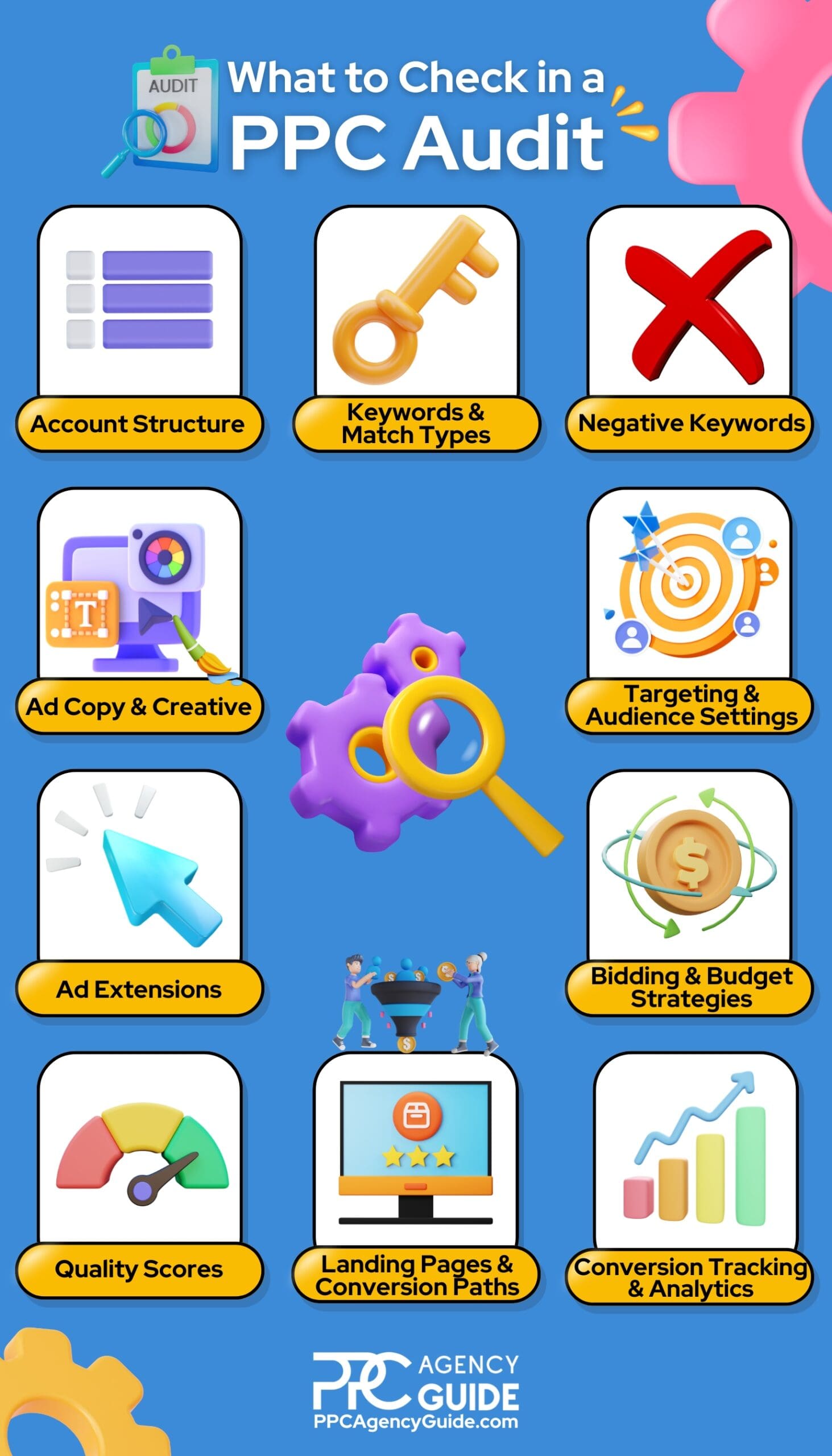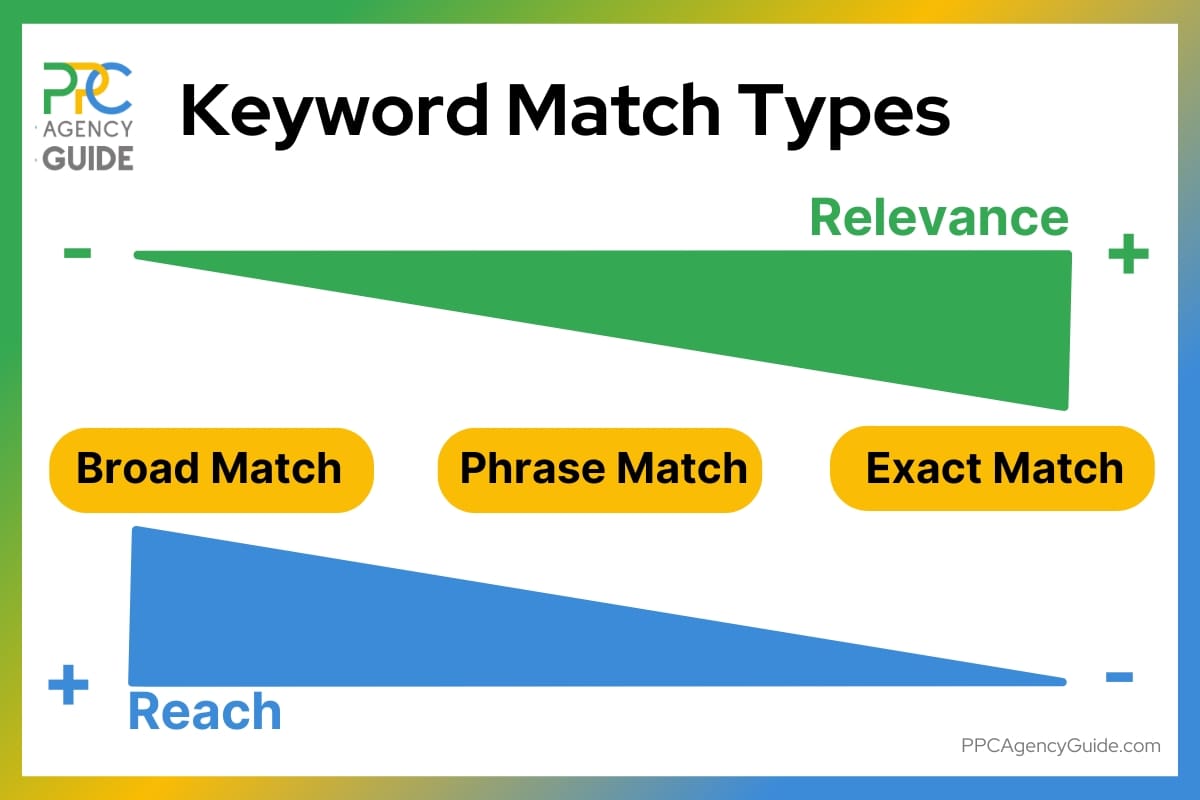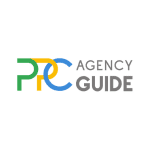
When was the last time you audited your pay-per-click (PPC) campaigns—not just giving them a quick once-over but genuinely evaluating PPC campaign effectiveness and all the things that lead to running strong campaigns? Most brands don’t do this often enough, and even those who invest the time don’t necessarily catch everything they need to without a comprehensive PPC audit checklist. However, performing audits is crucial to your long-term PPC success and allows you to gradually improve your results over time.
In this PPC audit guide, you’ll learn more about what audits can do for you and when to perform them, plus get step-by-step instructions for what to check and what to look for during your PPC audit.
What is a PPC Audit?
Did you know that brands receive $8 in profit for each $1 spent on Google ads, according to the platform’s research? Audits are a crucial component in reaching this level and beyond. If you’re new to PPC campaigns, understanding the basics is the first step. Our Beginners Guide to PPC Advertising provides an excellent overview to help you get started.

A PPC audit is a thorough review and analysis of a business’s PPC campaign strategies and Performance. Think of it like a PPC performance review. This process involves evaluating all aspects of the campaigns, from keyword selection and ad copy to the structure of the account and the settings used. The primary goal is to identify areas where improvements can be made to enhance the efficiency and effectiveness of the advertising spend. Not addressing inefficiencies in time could lead to campaign challenges. Learn more about the reasons your pay-per-click advertising is failing and how audits can prevent these issues.
When and How Often Should a PPC Audit Be Performed?
The frequency of PPC audits can depend on several factors, including the size of the campaign, budget, and changes in business goals. Generally, it’s a good idea to perform a PPC audit:
- Quarterly: A quarterly audit helps keep up with the evolving market dynamics and consumer behaviors. This frequency ensures that your campaigns are aligned with current trends and seasonality. Use PPC Benchmarks: How to Know You’re Hitting the Mark as a reference to track your performance consistently.
- After Significant Changes: If there have been major changes in your marketing strategy, like targeting new demographics or launching new products, an audit should follow to assess the impact of these changes.
- When Performance Drops: If you notice a decline in campaign performance, such as lower conversion rates or higher costs per acquisition, it’s critical to conduct an audit to identify and address the issues.
Benefits of a PPC Audit
- Optimization of Budget: Audits help ensure that your advertising dollars are spent effectively, potentially lowering costs by eliminating wasteful spending on non-performing keywords or poorly targeted ads.
- Improved Campaign Performance: By regularly auditing your PPC campaigns, you can continuously refine your strategies to achieve higher conversion rates and better overall Performance.
- Better ROI: Through strategic adjustments identified during audits, businesses can improve the return on investment (ROI) from their PPC campaigns. To understand how to measure and maximize your PPC ROI, check out our comprehensive guide on PPC ROI: How to Measure Success.
- Insights into Market Trends: Audits provide valuable insights into changing market conditions and consumer preferences, allowing businesses to adapt their strategies proactively.
PPC Audit Steps
Now that we’ve covered the background, let’s dig into the specific steps you’ll want to perform during your PPC audit and what to look for.
1. Review Account Structure
Auditing your PPC account structure is a critical first step because it sets the foundation for effective campaign management and Performance. Proper account organization also ensures that your campaigns align with tracking and conversion objectives. To learn how to set up accurate tracking for performance measurement, check out our guide on Google Ads Conversion Tracking.
What to Look at When Reviewing Your PPC Account Structure
- Campaign and Ad Group Organization: The account should be organized logically to allow for easy management and tracking. Campaigns should be structured around specific product lines, services, or themes. Ad groups within those campaigns should be tightly themed around particular products, services, or key phrases. This hierarchical organization allows you to target more effectively and makes budgeting more efficient. Structuring campaigns properly also complements optimized landing pages. Refer to Components of PPC Landing Pages for tips on aligning ad groups with landing page relevance.
- Granularity: Check if the account is too granular or too broad. Overly granular accounts can lead to unnecessary complexity and under-spending in small areas, while overly broad structures can cause poor ad relevance and Performance.
- Separation of Campaign Types: Ensure that different types of campaigns, such as Search, Display, Remarketing, and Shopping, are appropriately separated. This separation helps you allocate budgets according to the Performance and goals of each campaign type and ensures that strategies are tailored to the strengths of each campaign mode.
What to Look for When Reviewing Your PPC Account Structure
- Consistency and Clarity: The naming conventions for campaigns and ad groups should be consistent and clear, making it easy to understand what each campaign and ad group is targeting.
- Alignment with Business Goals: The structure should align with your business goals. For example, if a business’s goal is to promote seasonal products, there should be specific campaigns aimed at seasonal promotions.
- Scalability: The account should be structured in a way that it can grow. As the business evolves, adding new campaigns or ad groups should be straightforward without needing to overhaul the existing structure.
Example of an Account Structure PPC Audit
Imagine a local bakery using PPC ads. If their account structure separates campaigns by product categories like “Wedding Cakes,” “Birthday Cakes,” and “Bread & Pastries,” each with ad groups focused on specific products or themes, this would indicate a well-structured account. Each campaign can have tailored budgets and bids, and ad copy can be precisely targeted to match the searcher’s intent, leading to higher clickthrough rates and conversion rates.
2. Analyze Keywords and Match Types
Analyzing keywords and their match types is a crucial step in a PPC audit, as it directly impacts how well your ads match search queries and attracts the right audience. A PPC keyword analysis audit can reveal insights into keyword performance, help refine targeting, and optimize spending. If you’re new to match types, our Guide to PPC Keyword Match Types explains how broad, phrase, and exact match work and when to use them effectively.
What to Analyze in Keywords and Match Types
- Keyword Relevance: Assess whether the keywords are still relevant to your current offerings and market trends. Keywords must closely align with the products or services being advertised, and the search queries your potential customers are likely to use. To find the most relevant keywords for your campaigns, explore our PPC Keyword Research Tools guide, which highlights tools that can streamline your keyword research and optimization efforts.
- Keyword Performance: Evaluate the performance metrics of each keyword, such as clickthrough rates (CTR), cost per click (CPC), conversion rates, and return on ad spend (ROAS). High-cost keywords with low returns may need to be paused or optimized. Understanding how keyword performance ties into ad quality is crucial; learn more in Why PPC Ad Quality Scores Matter & How to Improve Them.
- Match Type Usage: Keywords can be assigned different match types—broad, phrase, exact, and negative. Each type controls how closely the keyword needs to match with the user’s search query to trigger your ads.
- Broad match keywords allow for a wide range of search queries to trigger your ads, which can be good for visibility but may result in irrelevant traffic and higher costs.
- Phrase match offers a balance, triggering ads for searches that include your keyword in the exact order but possibly with additional words before or after.
- Exact match targets very specific queries, which can lead to higher relevancy and conversion but lower reach.
- Negative keywords prevent ads from showing on irrelevant searches, reducing wasted spend.
What to Look for in Keywords and Match Types
- Underperforming Keywords: Identify keywords that cost more than they return. Consider reducing bids or pausing them.
- Opportunities for Expansion: Look for new keyword opportunities based on search query reports and market trends. Adding new relevant keywords can help capture additional traffic.
- Optimal Use of Match Types: Ensure that match types are being used strategically to balance reach and relevancy. For instance, using more exact match keywords in highly competitive markets to reduce costs or employing broad match carefully with a robust list of negative keywords to avoid irrelevant clicks.

Example of a Keyword and Match Type Audit
Consider a company that sells athletic footwear. If their PPC audit reveals that the broad match keyword “running shoes” is attracting clicks from people searching for “running tips,” this could be wasting budget. By adjusting the keyword to a phrase match or adding “tips” as a negative keyword, the company can better target those interested in purchasing shoes, not seeking advice.
3. Identify Negative Keywords
Identifying negative keywords is a crucial step in refining PPC campaigns, especially for B2B businesses where targeting precision can significantly affect budget efficiency and campaign success. This process involves pinpointing and excluding keywords that trigger your ads but are irrelevant to your target audience, thus preventing wasted spend on unqualified clicks.
What to Identify in Negative Keywords
- Review Search Query Reports: Analyze search query reports from your PPC platform to see what actual search terms are triggering your ads. This allows you to identify irrelevant terms that are consuming your budget but are unlikely to convert into valuable business leads or sales.
- Assess Keyword Relevance: Determine the relevance of each keyword by considering the nature of your business and the intent behind the search queries. Keywords that attract users with different intents than what your business offers should be added as negative keywords.
- Continuous Monitoring: Regularly monitor and update your list of negative keywords. This ongoing process helps you adapt to changes in search trends and further refine your targeting.
What to Look for in Negative Keywords
- Irrelevant Traffic Sources: Look for keywords that frequently lead to clicks but have low conversion rates, indicating that while the keyword is relevant enough to trigger the ad, it does not align well with the user’s needs or your business’s offerings.
- Costly Keywords with Low ROI: Identify high-cost keywords that are not delivering proportional returns. Adding these as negative keywords can help redirect your budget to more effective terms.
- Broad Match Keywords: Pay special attention to broad match keywords, which can often trigger ads for a wide array of search queries, not all of which may be relevant.
Example of a Negative Keyword Audit
For instance, a company specializing in commercial construction services might find that their ads are being triggered by search queries for “residential construction jobs,” which are not relevant to their business model. By adding “residential” as a negative keyword, they can ensure their ads are more targeted toward commercial clients, improving the quality of their leads and potentially reducing their cost per acquisition.
Another example could be a medical equipment supplier who finds that specific keywords attract queries related to consumer health products, which are outside their B2B focus. Adding specific negative keywords related to consumer products would prevent these irrelevant clicks and preserve the budget for more qualified B2B customer interactions.
4. Examine Ad Copy and Creative
Examining ad copy and creative is crucial as it directly impacts how your ads resonate with the target audience, influencing both clickthrough rates and conversion rates.
What to Examine During an Ad Copy Audit in PPC
- Message Alignment: Ensure that the ad copy aligns with the business’s value proposition, the needs of the target audience, and the specific stages of the buyer’s journey. It’s worth noting that B2B ad copy often needs to address more complex decision-making processes and multiple stakeholders. For inspiration on impactful language, explore our blog on PPC Ad Power Words, which highlights effective words that capture attention and drive action.
- Clarity and Compliance: Ad copy should be clear, concise, and free from any misleading information. It should also comply with PPC platform guidelines and industry regulations, especially in sensitive sectors such as medical or finance.
- Call-to-Action (CTA): The CTA should be strong, clear, and appropriate for the stage of the funnel. In B2B contexts, CTAs might include actions like “Schedule a Demo,” “Download a Whitepaper,” or “Request a Quote,” which are different from more direct consumer actions like “Buy Now.”
- Differentiation: The ad should clearly differentiate the company’s offerings from competitors. Highlight unique selling propositions (USPs) or value adds that are relevant, such as “24/7 customer support,” “industry-leading,” or “custom solutions.”
- Visuals and Branding: For platforms that support image or video ads, visuals should be professional, brand-aligned, and appropriate for the industry. They should reinforce the ad’s message and appeal to the decision-makers in the businesses you are targeting.
What to Look for in Ad Copy and Creative
- Performance Metrics: Evaluate how different versions of ad copy are performing in terms of CTR, conversion rates, and engagement. Low-performing ads may need to be rewritten or reformatted. If your current copy isn’t resonating, refer to How to Write Killer Copy for PPC Marketing Campaigns for actionable tips to improve ad effectiveness.
- A/B Testing Results: Check the results of any A/B tests on ad copy or creative elements to determine what resonates best with the target audience.
- Consistency Across Campaigns: Ensure that there is consistency in messaging across different campaigns and platforms to maintain a unified brand voice.
Example of an Ad Copy and Creative Audit
Consider a construction equipment leasing company. During their PPC audit, they might find that their ad copy primarily highlights generic benefits like “Affordable Equipment Leasing.” However, their unique selling proposition could be more compelling if they focus on industry-specific needs such as “Customized Leasing Solutions for Large-Scale Construction Projects” or “Flexible Leasing Terms for Seasonal Construction Needs.” Enhancing their CTA to something like, “Contact Us for a Custom Quote,” can also lead to higher engagement from businesses looking for tailored solutions.
5. Check Targeting and Audience Settings
Checking targeting and audience settings is crucial for ensuring your PPC campaigns reach the right people. This step involves a deep dive into how and to whom your ads are being shown, which can significantly influence campaign effectiveness and ROI.

What to Check in Targeting and Audience Settings
- Geographic Targeting: Assess whether the campaigns are targeting the appropriate geographical areas. For B2B companies, especially those in services or distribution, targeting might need to be specific to regions where their prospects are located. PPC Geotargeting provides actionable insights on tailoring your ads to the right locations.
- Demographic and Firmographic Targeting: In B2B marketing, it’s crucial to target based on business-oriented demographics such as company size, industry, job titles, and seniority levels. This ensures that your ads reach the individuals who have the authority to make purchasing decisions.
- Device and Platform Targeting: Check if the campaigns are optimized for the devices and platforms most used by your target audience. For example, if your audience primarily uses desktops during business hours, campaigns should be optimized accordingly.
- Time of Day and Day of Week Targeting: Potential customers might interact with your ads during specific times, like business hours or weekdays. Ensure that your ads run at optimal times to increase visibility and engagement.
- Audience Segmentation and List Usage: Review how well segmented your audience lists are. Effective segmentation can include creating separate lists for different stages of the sales funnel, such as prospects, leads, and existing customers. Utilizing retargeting lists to show ads to users who have visited your website but haven’t converted can also be highly effective. Use audience personas to define these segments better—Creating PPC Ad Personas to Boost Campaign Performance provides step-by-step guidance.
What to Look for in Targeting and Audience Settings
- Alignment with Business Objectives: Ensure that targeting settings align with broader business objectives and the specific goals of each campaign.
- Efficiency of Spend: Look for any signs of budget waste, such as spending on broad, non-specific audiences that are less likely to convert.
- Performance by Segment: Analyze performance metrics across different targeting settings to identify which segments are performing well and which are underperforming.
Example of a Targeting and Audience Settings Audit
Consider a medical device manufacturer targeting hospital procurement managers. During their PPC audit, they might find that their campaigns are set to run 24/7. Adjusting this to target only weekdays during business hours could improve ad performance, as procurement managers are more likely to be at work and in decision-making mode during these times. Additionally, examining and refining their audience to focus more specifically on job titles relevant to purchasing in hospitals (like “Procurement Manager” or “Medical Director”) can further enhance the effectiveness of their campaigns.
6. Evaluate Ad Extensions
Evaluating ad extensions is an essential part of the PPC audit process, as extensions can significantly enhance the visibility and Performance of your ads by providing additional information and interactive elements that improve clickthrough rates and overall ad effectiveness.
What to Evaluate in Ad Extensions
- Types of Ad Extensions Used: Check which ad extensions are currently being used in your campaigns. Common ad extensions include sitelink extensions (which link to specific pages on your site), call extensions (which add a phone number to your ads), location extensions (which show your business address), callout extensions (which include additional descriptive text), and structured snippet extensions (which highlight specific aspects of your products/services).
- Objective Match: Evaluate whether the ad extensions are appropriate for the objectives of your campaign and the needs of the persona you are targeting.
- Relevance and Accuracy: Ensure that the information provided in the ad extensions is accurate, up-to-date, and relevant to the ad’s messaging. For example, if you’re using callout extensions, the features or services highlighted should be attractive and relevant to the target audience.
- Performance Analysis: Review the performance data for each type of ad extension to see how they are contributing to your campaign goals. Look at metrics like clickthrough rates and conversion rates specifically attributable to interactions with these extensions. Also, identify underperforming extensions that may need to be revised or replaced.
What to Look for in Ad Extensions
- Utilization of All Relevant Extensions: Make sure you are using all the types of ad extensions that could benefit your campaigns. Missing out on relevant extensions can mean missing out on opportunities to provide potential customers with valuable information.
- Alignment with Business Goals: Each extension should have a clear purpose and contribute to the overarching goals of the campaign, whether it’s driving traffic to specific product pages, generating leads via calls, or enhancing local visibility.
- Consistency Across Campaigns: Ensure consistency in how ad extensions are used across different campaigns to maintain a cohesive user experience and brand message.
Example of an Ad Extension Audit
For a B2B medical equipment supplier targeting hospital procurement teams, evaluating ad extensions might include the following:
- Sitelink Extensions: Including links to product categories like “Surgical Instruments,” “Diagnostic Equipment,” and “Patient Monitoring Systems” to allow quick access to these products.
- Call Extensions: Featuring a phone number during business hours to facilitate direct inquiries, supporting complex B2B sales processes that often require personal interaction.
- Structured Snippets: Highlighting types of equipment offered, such as “Ultrasound Machines, X-ray Machines, MRI Machines,” providing quick insights into product offerings right from the ad.
7. Assess Bidding Strategies and Budget Allocation
Performing a PPC budget and bid audit is vital to optimizing PPC campaigns, especially in the B2B sector, where the cost per click can be high and the sales cycles are longer. This process involves evaluating how your budget is being spent and how your bidding strategies align with your campaign goals.
What to Assess in Bidding Strategies and Budget Allocation
- Bidding Strategies: Review the types of bidding strategies used, such as manual bidding, CPC cost-per-acquisition (CPA), or ROAS. Each strategy has implications for how aggressively you are pursuing ad placements and how efficiently you are spending your budget.
- Automated Bidding: Automated bidding strategies like Google’s Smart Bidding leverage machine learning to optimize bids for conversions or conversion value in each auction. Assessing their effectiveness is crucial, especially in complex purchasing environments.
- Budget Distribution: Analyze how budgets are allocated across different campaigns and ad groups. Ensure that higher-performing or more strategic areas are adequately funded while lower-performing areas are adjusted or optimized.
- Constraints: Check for any budget constraints that might hinder Performance. For example, if specific campaigns consistently exhaust their daily budget early in the day, you may be missing out on potential conversions.
- Cost Efficiency: Evaluate the cost efficiency of your campaigns. Are you achieving your desired outcomes within your budgetary constraints? This includes checking metrics like cost per click, cost per lead, and overall ROI.
- Competition: Analyze whether the bids are competitive enough to place your ads in a strong position without overspending.
What to Look for in Bidding Strategies and Budget Allocation
- Performance Alignment: Ensure that your bidding strategies align with your specific campaign goals and key performance indicators (KPIs).
- ROI and ROAS: Measure the return on investment and return on ad spend to determine if the financial objectives of the campaigns are being met. This is particularly important in B2B settings where each conversion can represent a significant revenue potential.
- Scalability: Identify opportunities where increasing budgets could lead to proportionally greater returns and consider reallocating budget from underperforming campaigns.
Example of a Bidding Strategies and Budget Allocation Audit
Imagine a trucking logistics company that wants to generate leads through PPC. They might use a CPA bidding strategy to keep costs in line with the value of a lead. During the audit, they find that the campaigns targeting regional managers of distribution centers are performing well with a lower-than-average CPA, suggesting an opportunity to increase the budget in this area. Meanwhile, broader targeting strategies, like those aimed at general business services, are yielding higher CPAs and might benefit from lowered bids or a shift in approach to more specific niches within the industry.
8. Analyze Quality Scores
Analyzing Quality Scores is a crucial step in a PPC audit because they directly affect the CPC and the position of your ads on search engines like Google. Knowing your scores and improving them as needed can lead to more efficient campaigns and better ad placements.

What is a Quality Score?
Quality Score is a metric used by Google Ads to estimate the quality and relevance of your ads and keywords. It’s influenced by several factors, such as:
- Clickthrough Rate: The frequency with which people click on your ad after seeing it, indicating its appeal to your audience.
- Ad relevance: How closely your ad matches the intent behind a user’s search query.
- Landing page experience: The relevance and usability of the landing page to which your ad directs users.
What to Analyze in Ad Quality Scores
- Individual Keyword Quality Scores: Review the Quality Scores for each keyword in your campaigns. Google provides a Quality Score on a scale from one to ten, with ten being the best. Low scores may indicate issues with keyword relevance, poorly performing ads, or suboptimal landing pages.
- Contributing Factors: Google provides ratings for expected clickthrough rate, ad relevance, and landing page experience. Analyzing these can help you pinpoint specific areas for improvement.
- Historical Changes: Track changes in Quality Scores over time to assess the impact of any modifications you’ve made in your PPC strategies. Increasing trends can validate your recent optimizations, while decreasing trends may signal new issues.
What to Look for in Ad Quality Scores
- Areas for Improvement: Low Quality Scores can lead to higher CPCs and lower ad positions. Identifying and addressing the components contributing to low scores can help reduce costs and improve ad visibility.
- High-Performance Keywords: Conversely, high Quality Scores indicate well-optimized components. Analyzing what works for these keywords can provide insights that can be applied to other areas of your campaigns.
Example of an Ad Quality Score Audit
Consider a finance company that offers business loans. They might find that their keyword “short-term business loans” has a low Quality Score due to a low CTR. Upon reviewing the ad copy, they realize it’s not compelling enough and doesn’t include a strong CTA. Additionally, the landing page might be too general and not specifically tailored to short-term loans, which affects both the landing page relevance and the user experience.
By addressing these issues—refining the ad copy to be more specific and compelling and optimizing the landing page to focus specifically on short-term loans—the company can potentially improve the Quality Score, leading to better ad performance and lower costs.
9. Review Landing Pages and Conversion Paths
It’s essential to review landing pages and conversion paths, as these elements directly influence how well your campaigns convert visitors into leads or customers. During this part of your PPC audit, you’ll focus on ensuring that the user experience, from clicking an ad to completing a desired action, is seamless and optimized for conversion.
What to Review in Landing Pages and Conversion Paths
- Relevance to Ad Copy: Ensure that the content of the landing page directly correlates with the promise made in the ad copy. This relevance is crucial to maintain the user’s interest and trust.
- Clarity and Simplicity of the Conversion Path: The steps a user needs to take to complete a conversion, such as filling out a form, signing up for a newsletter, or making a purchase, should be clear and minimal. Overly complicated or unclear paths can lead to high bounce rates.
- Call-to-Action: CTAs should be prominently displayed and compelling. They must stand out visually and convey a clear message about what the user will get by taking action.
- Page Design and Usability: The landing page should be professionally designed and easy to navigate. It should load quickly, be mobile-friendly, and have a layout that logically guides the user toward the conversion goal.
- Content Quality: The content should be informative, engaging, and tailored to meet the needs and expectations of the target audience. This often includes detailed product descriptions, benefits, testimonials, and possibly a FAQ section.
What to Look for in Landing Pages and Conversion Paths
- Conversion Rate Performance: Assess how effectively the landing pages convert visitors into leads or customers. Low conversion rates might suggest issues with page content, layout, or load times.
- User Engagement Metrics: Analyze metrics like time on page, bounce rate, and page views per visit to gauge how engaging and effective the landing page is.
- A/B Testing Results: If A/B testing has been conducted, review the results to determine which variations of your landing page perform better. This can provide valuable insights into what elements are most effective in driving conversions.
Example of a Landing Page and Conversion Path Audit
Consider a construction management software company that uses PPC to drive potential customers to a demo sign-up page. They might find that although their ads generate a lot of clicks, the conversion rate on the landing page is low. Upon reviewing, they could discover that the landing page is cluttered, contains too much technical jargon, or that the sign-up form is too lengthy.
Improving the landing page by simplifying the content, using clearer, benefit-focused language, reducing the number of form fields, and adding a short explanatory video could enhance user understanding and encourage more sign-ups.
10. Inspect Conversion Tracking and Analytics
Inspecting analytics and conversion tracking in a PPC audit is done to ensure that all conversions and interactions with your ads are being accurately tracked and measured. This allows you to understand the effectiveness of your campaigns and make data-driven decisions to optimize them.
What to Inspect in Conversion Tracking and Analytics
- Accuracy of Conversion Tracking Setup: Verify that conversion tracking is correctly implemented across all campaigns. This involves checking the tracking codes or pixels on your website to ensure they are firing correctly when a user completes a conversion action, such as filling out a form, downloading a brochure, or making a purchase.
- Integration with Analytics Platforms: Ensure that your PPC campaigns are correctly linked to analytics platforms like Google Analytics. This is crucial for deeper analysis of how users interact with your site after clicking on ads.
- Goal Configuration: Check that goals are correctly set up in your analytics platform to correspond with key conversion points. Goals might include completed sign-ups, successful downloads, or reached key pages.
- Attribution Models: Review the attribution model being used to credit conversions in multi-touch environments. In B2B scenarios, where the buyer’s journey can be complex and involve multiple interactions, understanding which touchpoints and channels drive conversions is crucial.
- Offline Conversions: Ensure your PPC analytics and reporting review includes how you’re measuring and tracking offline conversions, including phone calls and visits to brick-and-mortar locations.
What to Look for in Conversion Tracking and Analytics
- Discrepancies in Data: Look for discrepancies between the data reported by your PPC platforms and your analytics platforms. Differences may indicate issues in tracking implementation or data attribution.
- Conversion Paths and Funnel Visualization: Analyze the paths users take to convert and identify any drop-off points or bottlenecks in the funnel. This information can help refine the user journey and increase conversion rates.
- Cross-Device and Cross-Channel Tracking: Ensure that tracking spans across all devices and channels that a potential customer might use. Note that users may start their journey on one device and convert on another or interact through various channels before converting.
Example of a Conversion Tracking and Analytics Audit
A company specializing in fleet management solutions might use PPC to drive traffic to a webinar sign-up page. If their analytics show that many users click on the ads but few complete the sign-up, there could be a tracking issue. Maybe the conversion pixel is not implemented on the thank-you page post-sign-up, or the sign-ups are being lost due to tracking not capturing users who switch devices.
Upon inspecting and fixing these issues—ensuring the conversion tracking pixel is correctly placed and configured to handle cross-device tracking—the company can accurately measure the effectiveness of their ad spend and better understand the ROI of their campaigns.
PPC Audit Tools: Finding the Best Resources to Optimize Your Campaigns
Conducting a comprehensive PPC audit is essential for optimizing campaign performance. Here’s a look at tools that enhance various aspects of your audit—from keyword research to negative keyword management and campaign analysis. For a curated list of must-have resources, explore our blog on the Best PPC Tools, which highlights essential software for improving campaign efficiency.
Keyword Research Tools for Effective Targeting
Keyword tools like Google’s Keyword Planner, SEMrush, and Ahrefs are crucial for refining your campaigns. They provide insights into keyword volume, competition, and CPC, which helps ensure your ads appear for the most relevant terms. By regularly reviewing keywords and match types with these tools, you’ll maintain alignment with search intent and improve your ads’ performance. For campaigns on Microsoft Ads, be sure to use their built-in keyword planner as well. To stay ahead of competitors, consider incorporating competitor analysis into your strategy. Learn how with our guide on Competitor PPC Analysis.
Campaign Analysis Tools for Performance Insights
Tools like Google Analytics, Optmyzr, and Adalysis streamline campaign analysis, making it easy to track and adjust metrics like CTR, conversion rate, and ROAS. These tools enable you to pinpoint and prioritize areas needing improvement within your Google Ads account. By regularly assessing these metrics, you can refine campaign settings, ensuring your ad spend is efficiently allocated.
Negative Keyword Tools for Improved Relevancy
Negative keywords prevent irrelevant clicks and budget drain. Google’s search terms report and tools like Negative Keyword Pro highlight terms to exclude, helping you maintain audience relevancy. Adding negative keywords to your PPC checklist refines your targeting and optimizes spend.
Utilizing these tools will strengthen your audit process, improve targeting, and boost the effectiveness of your PPC efforts.
Get a Professional PPC Audit
While this PPC audit guide covers most of what you’ll need to look for and check, every brand, advertising platform, and campaign has its own nuances. Moreover, some of the techniques covered here require advanced PPC knowledge and can be time-intensive, especially if you’re not a PPC expert. An experienced PPC agency can efficiently manage your audits and ongoing maintenance so you can focus on the day-to-day needs of your business and be confident that your paid ad campaigns are consistently delivering the best possible results. If you’re considering hiring a PPC agency, knowing the right questions to ask can ensure you select the best partner for your needs. Refer to our guide on Questions to Ask a PPC Agency to make an informed decision.
If you’re new to PPC or in the early stages of setting up your campaigns, it’s crucial to have a solid foundation before running any paid ads. To ensure your campaigns are structured correctly from the outset, review our Steps to Take Before Starting a PPC Campaign guide. This resource will walk you through everything you need to consider—such as defining business goals, setting up tracking, and choosing the right keywords—before launching your PPC strategy.
At PPC Agency Guide, we help match brands like yours with experienced agencies that understand your industry and are committed to ensuring your online advertising delivers the results and ROI you deserve. To learn more or get started, request a complimentary PPC consultation.


















